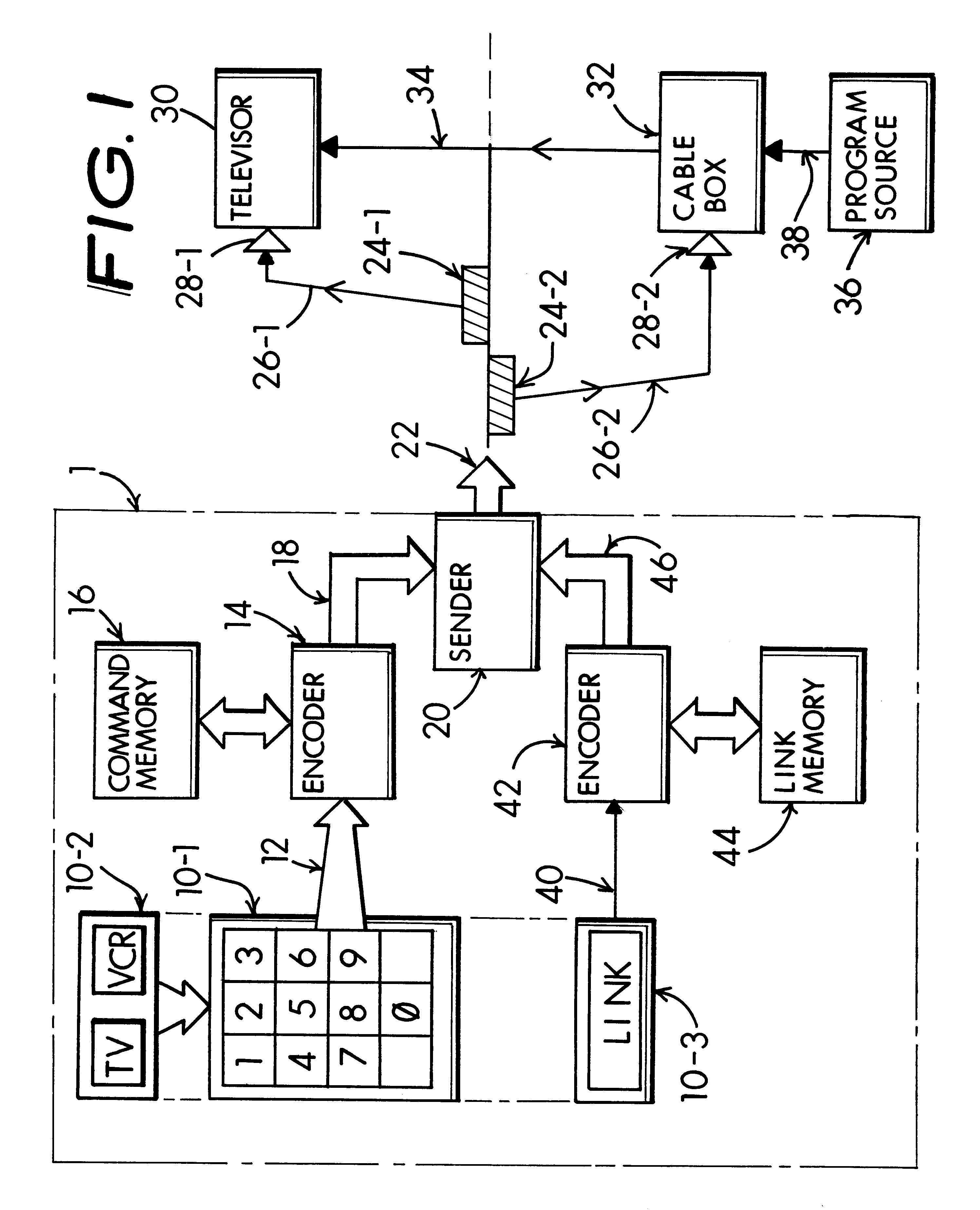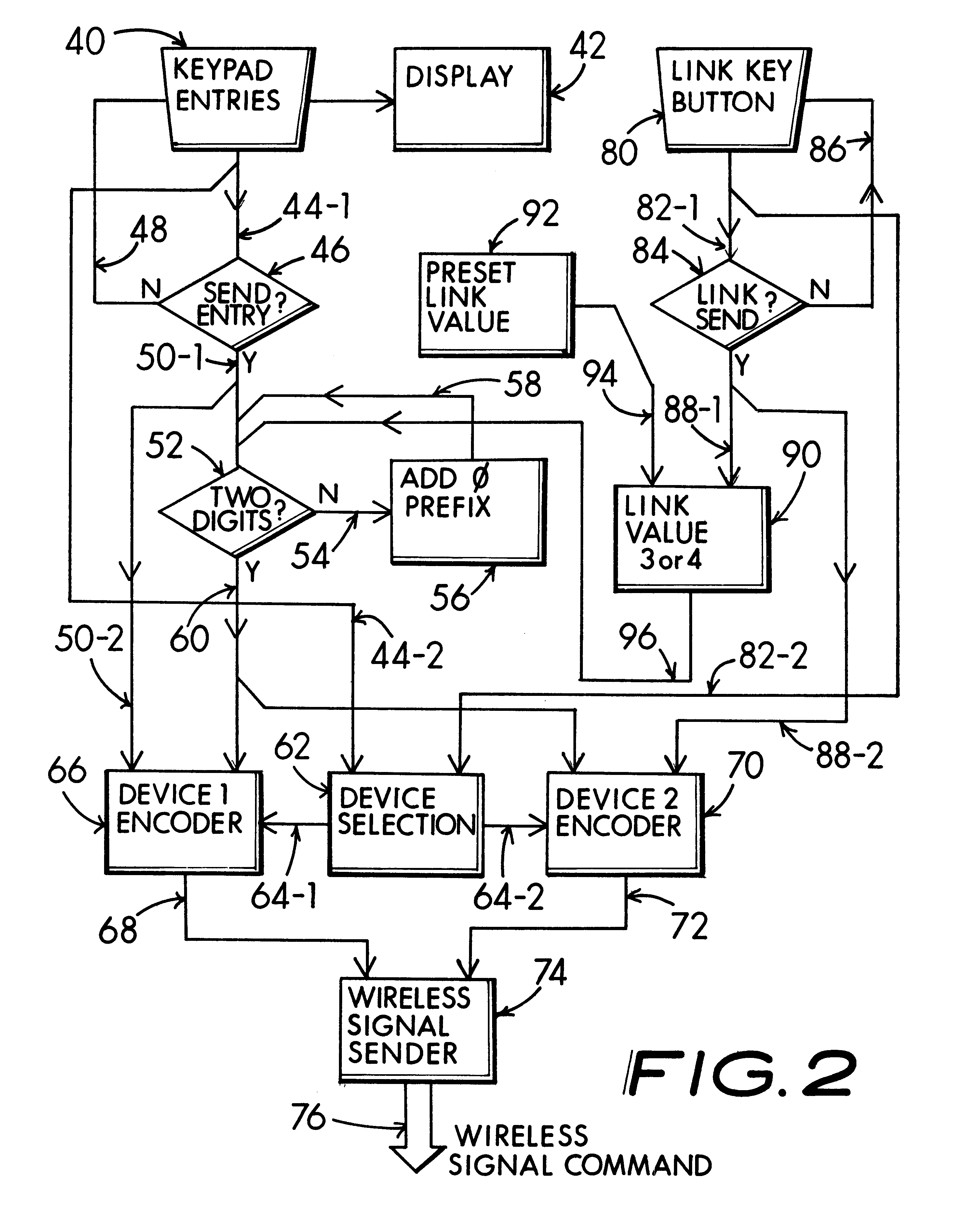Remote control dedicated keybutton for confirming tuner setting of a TV set to a specific channel setting
- Summary
- Abstract
- Description
- Claims
- Application Information
AI Technical Summary
Problems solved by technology
Method used
Image
Examples
Embodiment Construction
A overview of one arrangement 1 for my invention is shown in FIG. 1. A keypad 10-1, which is ordinarily accessible to a viewer or user of the remote control, couples 12 with the input of an encoder 14. It is the role of the encoder to utilize data retrieved from a command memory 16 to:
1. Establish the encoding pattern which may be recognized by a specific controlled device such as a televisor 30 or cable box 32 selected by having pressed one of the keypad 10-2 buttons (e.g., TV or CBL);
2. Define specific instruction patterns on the encoding pattern to translate an entry, such as a channel selection digit, made through the keypad by the viewer into an interpretable instruction command when received by the remotely controlled cable box 32.
The command memory 16 is ordinarily pre-loaded, typically by a maker of the remote controller, to include encoding patterns specific to any number of televisors, VCR-machines, cable boxes, satellite receivers and other apparatus.
The encoded, instruct...
PUM
 Login to View More
Login to View More Abstract
Description
Claims
Application Information
 Login to View More
Login to View More - R&D
- Intellectual Property
- Life Sciences
- Materials
- Tech Scout
- Unparalleled Data Quality
- Higher Quality Content
- 60% Fewer Hallucinations
Browse by: Latest US Patents, China's latest patents, Technical Efficacy Thesaurus, Application Domain, Technology Topic, Popular Technical Reports.
© 2025 PatSnap. All rights reserved.Legal|Privacy policy|Modern Slavery Act Transparency Statement|Sitemap|About US| Contact US: help@patsnap.com



